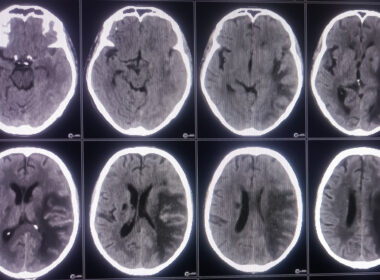Childbirth is one of the biggest events in a parent’s life. It is usually something to be celebrated by friends and family members.
Unfortunately, mistakes, accidents, and medical negligence can lead to birth injuries like Erb’s Palsy marring the entire occasion. This is a severe condition that, if not appropriately managed, can affect the lifestyle of the baby.
If you or someone you know has a baby that was injured at birth, you may be able to file a claim for financial compensation. Here we will review the top symptoms of Erb’s Palsy and how to get legal help for this condition.
What is Erb’s Palsy?
Erb’s Palsy also known as Erb Duchenne palsy is the medical name for a form of paralysis that affects the brachial plexus nerves (the network of nerves that originates in the spinal cord and controls movement in the upper arm). The condition most commonly affects babies at birth but can also affect adults. Erb’s palsy occurs in about 2 out of every 1,000 births.
You can get more information about this condition on the United Brachial Plexus Network.
What Causes Erb’s Palsy
Erb’s palsy is one of the common types of brachial plexus birth palsy. It is caused by damage to the brachial plexus (just like klumpke palsy). The brachial plexus is a group of nerves that send signals from the spine to the shoulder, arm, and hand.
Erb palsy can occur during birth if the baby’s head and neck are forced into an abnormal position or if the baby is born breech (bottom first). It can also be caused by a direct blow or compression of the brachial plexus nerves (brachial plexus palsy), or a traumatic injury to the neck or shoulder.
Erb’s Palsy Symptoms
The inability to move an arm or shoulder shortly after delivery is one of the first observable symptoms of a brachial plexus birth palsy. Although newborns have little control over limb movement, they can move their arms and legs, therefore a baby with one arm hanging limply by their side may be experiencing brachial plexus nerve injury.
Other typical Erb’s palsy symptoms include:
Partial or total paralysis of the arm
The individual may have difficulty moving the affected arm or hand. This is usually a sign of arm partial paralysis. The inability to move that arm at all means that the injury has resulted in complete paralysis.
Tingling or numbness in the affected arm or hand
In some cases, patients experience tingling in their hands and fingers due to nerve damage. They may also experience numbness in these areas because of problems with nerve transfers from the brain stem down to the extremities.
Limited ability to grasp objects with the affected hand
Patients with Erb’s palsy brachial plexus often have difficulty grasping things with the affected hands because they lose some feeling in these areas. They may also have problems with the range of motion in the affected arm.
Limited nerve or muscle development in the affected arm
Some cases of Erb’s palsy can cause peripheral muscle dysfunction or poor muscle development in the affected area. This usually happens due to weakness of the muscle control system for the arm, hand, and fingers.
Swelling and stiffness of the fingers
Patients may also notice swelling around their fingers due to inflammation caused by Erb’s palsy brachial plexus birth. This can make certain motor functions difficult.
Muscle weakness in the affected arm
Erb’s palsy can also result in muscle weakness as a result of damage to one or more upper nerves.
The waiter’s tip position
Probably the most common of Erb’s Palsy symptoms is the presence of a deformity called the Waiter’s Tip Deformity. A typical sign of the waiter’s tip is an arm bent down at an awkward angle (joint contracture), with the hand turned outward at the wrist and the fingers curl.
As you can see, there are just so many issues associated with Erb’s palsy injury.
While it is true that mild cases of Erb’s palsy resolve within a few months, for severe cases, the affected baby will need lots of medical care, daily physical therapy, and in some cases, adaptive equipment. Unfortunately, not everyone can afford to pay for the level of care associated with this child’s injury.
If you or someone you know has a baby with this condition, you need to explore the option of suing for negligence. Why not get in touch with a child’s birth injury lawyer today to determine if you can sue the hospital and file a claim for financial compensation?
Types of Erb’s Palsy Injuries
There are four main types of Erb’s palsy injuries:
Avulsion
Avulsion happens when the nerve is completely torn from the spinal cord. This is the most severe type of Erb’s palsy injury.
Neuroma
A neuroma is a benign (noncancerous) growth of nerve tissue as the injured nerve heals. This condition causes scar tissue to grow around the area as the nerves recover.
Neuropraxia
Neuropraxia is the least severe type of Erb’s palsy injury. It happens when the nerve is temporarily or mildly damaged but not completely torn. This condition causes a burning or stinging sensation but it usually heals on its own within a few months.
Rupture
When a nerve ruptures, it means there is a complete tear of the nerve. This type of injury is quite severe and it can cause permanent damage to the nerve. It typically requires the help of orthopedic surgeons.
Risk factors leading to Erb’s palsy include:
The following factors contribute to an increased risk of obstetric brachial plexus palsy/ Erb’s palsy.
Excessive birth weight (macrosomia)
A large baby is at greater risk of developing Erb’s palsy because it will be difficult to come out of the birth canal and can result in stretch injury to the neck tissues, causing nerve damage and muscle weakness.
C-section (cesarean section)
Erb’s palsy is usually not a concern with c-section births. Still, in a very small percentage of cases, lateral traction during a C-section can result in palsy brachial plexus birth or other brachial plexus injuries.
Diabetes in the mother
Mothers who have diabetes are more likely than others to have fetal macrosomia, as high amounts of sugar will pass from the mother to child, convert into fat and result in a big baby.
Obesity in mothers
Maternal obesity has been linked to an increased risk of complications during pregnancy and in vaginal deliveries. These complications include cerebral palsy and neonatal brachial plexus palsy (BPP) (with and without shoulder dystocia).
Prolonged second-stage labor (more than one hour)
Longer second-stage labor increases your risk of having an infant with brachial plexus birth palsy because it put extra stress on your baby’s shoulders and arms during this time period.
Use of vacuum or forceps during delivery
Erb’s palsy is more common in children who are delivered with forceps or vacuum extraction. Excessive force on the nerves in the infant’s neck can cause arm weakness. Pressure on a baby’s brain can also result in brain injury, which is the root cause of neurological disorders like cerebral palsy.
Diagnosing Erb’s Palsy Symptoms
If your baby is showing signs and symptoms of Erb’s palsy, it is important that you get official confirmation so that you can get started on the road to complete recovery.
The popular ways to diagnose this type of brachial plexus birth injury are:
CT (computed tomography) scan
A CT scan is a medical imaging test that uses a combination of x-rays and computer technology to create cross-sectional images (or slices) of the body. This allows doctors to see what’s going on inside the body. A CT scan can be done to search for damage to tissues and nerves relating to brachial plexus birth palsy.
MRI (magnetic resonance imaging) scan
The MRI scan is an imaging test that uses a combination of radio waves and a powerful magnet to produce detailed images of the body. The images produced by the MRI scan can be used to look for damage to the nerve fibers caused by brachial plexus birth palsy.
Nerve conduction study
A Nerve conduction study is used to diagnose nerve damage by measuring the electrical activity in the nerve. The study normally comprises many tests in which your nerve is stimulated, usually using electrode patches placed on your skin.
Physical examination
In a physical examination, doctors will search for any physical evidence of nerve injury, such as muscular weakness and decreased movement of the arm, shoulder, wrist, or hand.
If you think your baby may be experiencing a problem, inform your doctor as soon as possible. Your child can avoid a lot of future problems by receiving early diagnosis and treatment for birth injuries.
Additionally, if you believe that medical negligence contributed to the palsy brachial plexus birth, don’t delay to consult with a birth injury attorney to see whether you have a claim and what you can do to get financial compensation and justice for your child.
Treating Erb’s Palsy Symptoms
The key to getting the best of Erb’s palsy is early treatment. Here are some of the effective ways to treat this condition.
Physical Therapy
Physical therapy is the first and most effective method to get Erb’s palsy treated. It is important that the therapy is performed by a trained physical therapist, and that the therapist uses the best techniques possible to help improve the patient’s range of motion.
Occupational Therapy
Occupational therapy (OT) is a type of physical therapy. OT is used to help the affected arm and shoulder to function more like the other arm and shoulder. The range of motion exercises used in this therapy are aimed at enhancing the patient’s independence and capacity to perform day-to-day tasks.
Surgical Treatment
Surgical procedures can be used to treat Erb’s Palsy when other treatments fail. Orthopedic surgeons typically carry out nerve graft surgery to repair damage caused by brachial plexus birth palsy.
It doesn’t matter if your case requires daily physical therapy, rehabilitation exercises, or nerve surgery. Getting damaged nerves repaired can be an expensive undertaking. You should consider filing a claim for financial compensation to offset the cost of treatment and care, especially if you suspect that Erb’s palsy injury is a result of medical negligence and could have been prevented.
Thankfully, there is a lot of legal help available for people who have been a victim of medical malpractice. An attorney can review your case and work with you to get the medical team to pay for their negligence.
Getting Legal Help for Erb’s Palsy
Many Erb’s palsy cases are caused by medical negligence. When doctors, nurses, and labor room professionals make mistakes during childbirth, it can cause serious brachial plexus injury, leading to Erb’s palsy.
If you or someone you love has been diagnosed with Erb’s palsy, it’s important to get proper professional medical advice and find the right legal representation so that you can file a medical malpractice claim. This is where Justpoint comes in.
Our platform uses predictive analytics to connect lawyers with victims of brachial plexus injuries. We take your information and help you create the attorney client relationship that is the best fit for your situation. And best of all, it’s 100% free.
Key Takeaways
- Erb’s palsy is a type of brachial plexus injury that affects the muscles of the arm and hand.
- Symptoms of Erb’s palsy can be mild or severe.
- The most recognizable of all Erb’s palsy symptoms is the waiter’s tip.
- When the condition is mild, the area can recover in a few weeks or months and become healthy nerves. When the condition is severe, it can lead to permanent paralysis in the affected arm despite nerve grafts and PT.
- Erb’s palsy is usually caused by mismanaged childbirth.
- You can sue for financial compensation if you can prove that your brachial plexus injury is caused by medical negligence.
- Justpoint can connect you to childbirth injury lawyers that can help with your Erb’s palsy case.
FAQs
Can Erb’s palsy be cured?
When treated promptly and properly, you can expect complete recovery with mild cases of Erb’s palsy within a few months. Severe cases, however, may not fully heal, despite nerve graft surgery and the efforts of a physical therapist.
How is Erb’s palsy diagnosed?
Erb’s palsy can be diagnosed by clinical examination, but a doctor may also need to carry out a CT or MRI scan to determine the extent of the brachial plexus injuries.
What nerve is damaged in Erb’s palsy?
Erb’s palsy typically affects the C5 and C6 roots of the brachial plexus. These are the nerves that control movement in the shoulder and upper arm.
Does Erb’s palsy cause pain?
Erb’s Palsy can also cause irregular and/or intense pain. It usually occurs in the arm, but it can also affect the shoulder.












